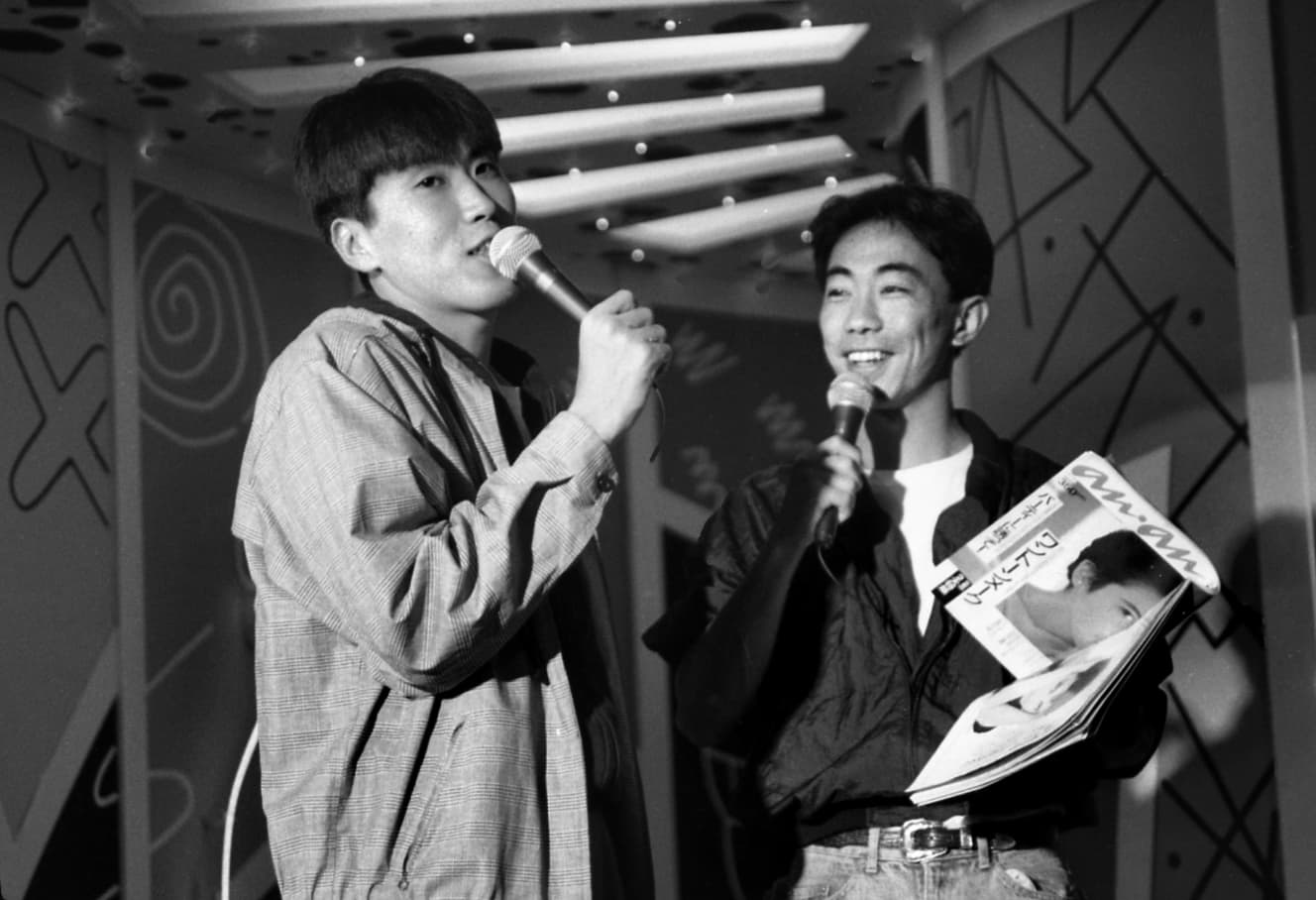“Gara Gara Hebi ga Yattekuru” – The year the TUNNELS took the entertainment world by storm
This is a series of articles about hit songs from just 30 years ago. The year 2022 has come and gone, which means that 30 years ago, the year 1992 came and went.
Thirty years ago, Japan was buzzing with the hit song “Rattlesnake is Coming” by Tunnels. The lyrics were written by Yasushi Akimoto, of course. It was an extraordinarily big hit, selling a whopping 1,409,000 copies (Oricon). Of course, it was the biggest hit of the Tonnels’ career.
This song is often thought of as a mere “project,” but its friendly melody and light ska beat is fresh even when listened to today, and it is a song with strong vitality that would sell even if it were released in the age of harmony.
In addition to TV programs such as “Tonneruzu no minasan no okagedeshimasu” and “Neruton Kougei-dan,” the power of music, such as “Jokenai” (1991) and this song, also contributed to the fact that the Tonneruzu, who became the darlings of the times in the late 1980s, were able to keep their momentum going into the 1990s.
Not only Tonneruzu, but also Yasushi Akimoto was the darling of the times in the latter half of the 80’s, and with the release of Misora Hibari’s “Kawano Nagare no Youni” on January 11, 1989 (the fourth day of the Heisei era), he rose to the top of the lyric writing world.
Now, there are people who are easily made into legends and people who are not. The former are Beat Takeshi and Downtown in comedy, and Takashi Matsumoto in lyricists. The latter are the Tonneruz and Yasushi Akimoto.
At the moment, there is no hint that “Narimasu Kid” will be made, following the example of Beat Takeshi and following the days of Takaaki Ishibashi, nor is there any hint that a large-scale tribute concert to Yasushi Akimoto will be held, following the example of Takashi Matsumoto.
In other words, I feel as if they are not being made into legends, or in other words, they are being taken lightly, and I am a little bothered by this situation.
Why? To tell you the truth, it’s because I have a memory of being obsessed with “Tonnels and Akimoto Yasushi in 1985.
In 1985, the poster generation of television was in full swing.
–“You guys like Kouhei Tsuka, right?
According to the book “Tonnels Daishi: Takaaki Ishibashi – Noritake Kinashi” (Nippon Hoso Shuppan), when the two members of the Tonnels met Yasushi Akimoto, the first thing Akimoto said to them was, “You guys like Kohei Tsuka, right?
–So I asked Akimoto-san, “What’s that? He opened his mouth and said, “So you’ve never read or seen any of your books or plays? (I was half exasperated.)
I think this “step difference” was a good thing.
For the Tonnels, Yasushi Akimoto was three grades above them, a small step, but in contrast to Ishibashi and Kinashi, who had been on the baseball and soccer teams at Teikyo High School and were very athletic, Akimoto had started out as a postcard craftsman at a late-night radio station, gained experience as a broadcaster, and by the time he met the Tonnels, he was a “gyokaijin. A big step called Akimoto.
Born in Tokyo in the 1950s, Tonnels and Yasushi Akimoto, who came from the two extremes of gymnastics and culture, respectively, joined hands firmly and tore up the TV and entertainment worlds with their feet on the ground.
The Tonnels’ singles “Ikki” and “Seinen no Ariketsu,” written by Yasushi Akimoto, reached No. 19 and No. 15 on the Oricon, respectively, and finally reached the top ten with “Ame no Nishiazabu,” released in September 1985, at No. 5.
In April 1985, Fuji TV’s “Yuyake Nyan Nyan” started with Onyanko Club. Yasushi Akimoto wrote a series of racy lyrics, symbolized by “Sailor Fuku wo Sagasenai De,” and they became hit after hit. Of course, it was TUNNELS who was the most outrageous in this show.
In the same year, Yasushi Akimoto gave the pop icon of the era, Kyoko Koizumi, an even more outrageous lyric called “What’s the Matter with Idols,” in which an idol parodies an idol.
–In the world of entertainment, if you don’t sell, you’re shit, if you sell, you’re a lord. When we were at school, we were completely unpopular, but when we walked down the street, people would say ‘Taka-san, cackle’ and ‘Ken-san, look at me! It’s the best feeling ever.
–Indeed, things were going so well for me and the TUNNELS that we had nothing to be afraid of. I even feel like I’ve had all the successes I could ever want.
Tonnels and Yasushi Akimoto in 1985″, how racy, how wild, and how cool these three guys in their twenties were!
In hindsight, it was the rebellion of the “generation that was already there when TV was born,” or the “poster generation for TV,” against the “generation that made TV.
The “TV poster generation” had the frivolous nature of the TV medium imprinted in their blood. That’s why they were able to overcome the “generation that made TV” with their ideas and stamina – this was the essence of “Tonnels and Yasushi Akimoto in 1985.
Thinking about it, I feel that Tonnels and Yasushi Akimoto were like Eikichi Yazawa to me at that time, a generation older. With rock ‘n’ roll imprinted in his blood, Eikichi Yazawa kicked the people who talked about rock ‘n’ roll with logic to the ground, and rose from carol to solo to “BIG” in one fell swoop.
In 1985, three ferocious rattlesnakes, the Tunnels and Yasushi Akimoto, took the TV world by storm. The senior members of the TV industry must have thought: “Let’s leave TV to these guys, the poster children of TV, because the way of the snake is the snake.
Bun: Suzy Suzuki Photo: Sankei Shimbun
